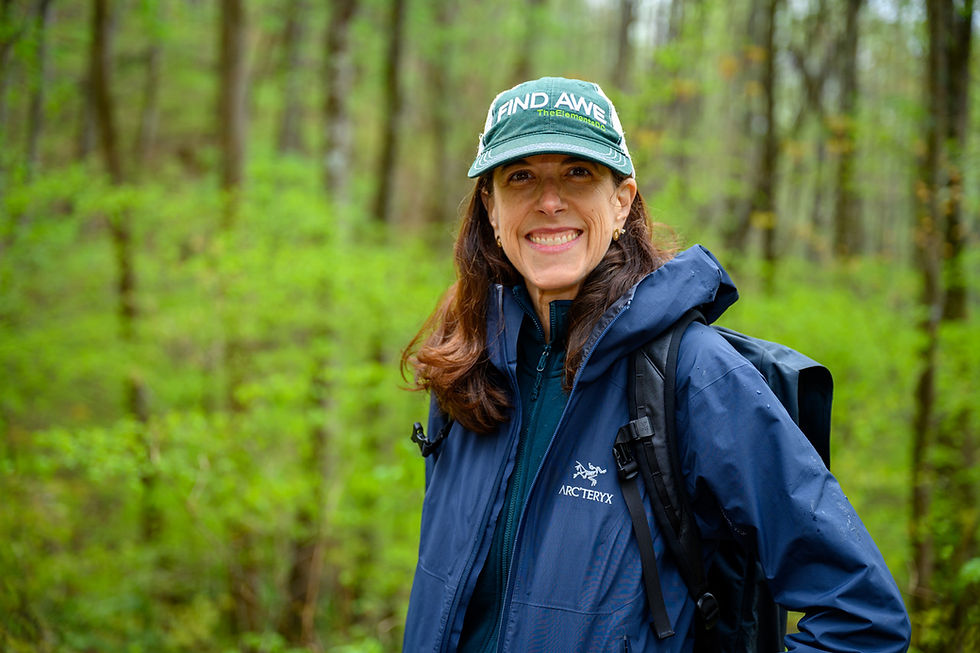Using Wilderness Therapy to Enhance the Quality of Life for Homeless People
- hikingresearch
- Feb 5, 2013
- 3 min read
Wilderness therapy has been used for personal growth, rehabilitation, education, and leadership development. Street-To-Trail (STT), a non-profit in Toronto, Canada is now using nature as therapy for the homeless in an innovative program. STT helps people living on the streets of Toronto rediscover their inner sense of worth using the healing power of the natural world. STT organizes wilderness hikes and other outdoor excursions including canoe trips that help homeless people experience the beauty and therapeutic calmness of nature. They believe that getting homeless people away from the city to participate in a wilderness trip enables them to increase their self-confidence, experience a positive environment to overcome addictions, find new and meaningful relationships, and rediscover lost feelings of peace and hope.

Street-To-Trail participants on a hiking excursion Photo courtesy Paul Mackle
STT activities involve more than a leisurely walk in the woods. Participants are required to demonstrate a commitment through training in skills, to be able to “graduate” to more advanced programs. The training STT offers prepares participants to go on overnight backpacking trips, bike trips, canoe trips, as well as cross-country ski and snowshoe trips. These activities help participants improve their health physically, mentally, emotionally and spiritually, while at the same time having fun. It is this integrated, whole form of “fitness” which is the secret to STT’s success. Paul Mackle, Executive Director of STT states, “We take over 275 people on activities each year. We supply everything needed on our journeys including tents, sleeping-bags, backpacks, food, cooking equipment, canoes, paddles, life-jackets, sleds, snowshoes, and other gear as needed.”
To better understand the impact of their program, STT collaborated with faculty and students from the University of Toronto Department of Occupational Science and Occupational Therapy and the Canadian College of Naturopathic Medicine to conduct research on the program. A qualitative study conducted by the University of Toronto provided a glimpse into the contributions the program is making in the lives of participants. Findings of the study revealed that by escaping the pressures of the city, including its negative influences, participants were able to experience a discrepancy between their old ways of life and current novel experiences. STT appeared to be a major source of stability for all participants, both in a concrete manner, such as establishing structure and routine, and in a more abstract way by acting as a constant anchor of hope. A finding that the researchers thought was especially important was the theme of the STT program offering a source of engagement in meaningful occupation. Participants associated their engagement in wilderness occupations as adding value to their lives. Participants in the study also indicated that escaping the pressures of the city, including its negative influences had a positive influence. Many research studies have found that urban environments are stressful and negatively impact health. The exposure to unfamiliar situations also encouraged participants to question accepted beliefs and practices.

Street-To-Trail participants enjoying nature Photo courtesy Paul Mackle
It is encouraging to see that occupational therapy faculty conducted this research. The OT field can make significant contributions to research and practice related to using nature to impact health. I have collaborated with occupational therapist Nancy Green, OTR/L, MHA, who is the Program Chair for the occupational therapy assistant program at Cabarrus College of Health Sciences and an alternative healer, to develop a course on utilizing nature for improved health. Nancy states,“the use of nature therapeutically is central to what occupational therapy is striving to accomplish-healing of the whole person.” Students in our course can participate in a research study looking at how time spent in nature impacts psychological well-being and stress levels. I have been contacted by graduate students at the Canadian College of Naturopathic Medicine who would like to collaborate with me to do a similar research study with the Street-To-Trail program. Research on the health benefits of time in nature must be an interdisciplinary endeavor, and the fields of OT and naturopathic medicine should be part of the conversation.
The results of this study provide an initial glimpse to an innovative approach to helping the homeless find stability in their lives. However, additional research is needed to support the findings of this study, which was based on a small sample. The innovative Street-To-Trail program should be replicated in other cities if the benefits of this study are any indication.








Comments